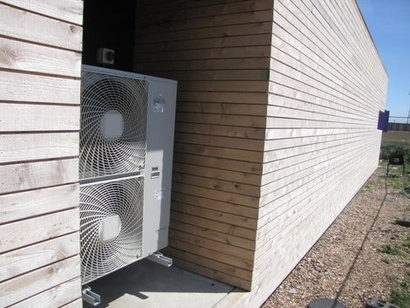
Tightening existing regulations could lower end-user natural gas demand by half within the next 20 to 25 years, reducing residential carbon dioxide emissions by more than 75 percent by 2050. This in turn would move Europe closer to achieving the EU 2030 and 2050 climate targets.
Currently, the heating sector is the focus of increased attention from policy makers following the release of the first European Heating and Cooling Strategy on February 16. The IHS Energy study Beyond the Flame: The Transformation of Europe’s Heat argues that the share of renewable heat used in the residential sector could reach 49 percent by 2040. This is significant because heating and cooling accounts for almost half of European energy consumption and presents a major opportunity for greenhouse gas reductions.
The study evaluated a range of technology options as well as building refurbishment measures based on their levelised costs and ease of installation in existing buildings to identify the most practical and affordable solutions to reduce energy consumption, improve energy efficiency, and increase the share of the renewable heat.
“At the current pace of change in the heat sector, Europe will fall short of the 2030 and 2050 goals, but more rapid change is possible” said Catherine Robinson, senior director at IHS Energy, and one of the authors of the study. “Our analysis strongly suggests that existing technology can transform Europe’s heat sector—significantly increasing the share of low-cost renewable heat— in the next 15 years by using existing legislation to introduce hybrid heating systems, which combine a high-efficiency condensing gas boiler with an air-source heat pump.”
The study found that the development of these integrated hybrid systems may transform the provision of heat in the areas of Europe where gas is currently the dominant heating fuel. Approximately 60 percent of the space heat provided by the heating system is provided by the heat pump, while the remaining 40 percent is provided by a high-efficiency condensing gas boiler. At present, hydrocarbons dominate heat provision in Europe with natural gas providing almost 50 percent of Europe’s heat. Europe’s heat supply is dominated by de-centralised heating in single family homes which make up 64 percent of European housing stock. These single family homes consume 65 percent of residential space and water heating demand, IHS said.
“The heat transformation would make a big difference in the countries that have a lot of gas heating, like the UK, Germany, the Netherlands, France or Italy” added Deborah Mann, director at IHS Energy. “The key finding of our IHS analysis is that hybrid heating systems can directly replace most existing gas boilers without the need for significant building refurbishment, unlike standalone heat pumps. From an environmental standpoint, these hybrid systems can provide large-scale, cost-effective reductions in GHG emissions.”
There are currently 93 million gas-fired boilers installed across the EU, according to the IHS study. Additionally, the IHS report found that the additional cost for the end-user is small compared to the alternatives. As an example, for a large household in the UK, the initial investment is approximately 3,000 euros more than for a traditional condensing boiler, but owing to the lower fuel bills, the additional cost to the consumer over the life of the boiler is less than 70 euros per year.
For low-density, rural areas, standalone heat pumps provide the lowest-cost heat, according to the study. However, in areas with sufficient density, district heating was found to be the lowest-cost source of renewable and recovered waste heat, yet, large-scale deployment is likely to take many years and may require mandates or legal obligations on households or developers to sign up.
A key benefit of a technology-driven transformation of the heat sector is that no new European legislation would be required because existing directives already provide the framework. IHS believes that the Ecodesign Directive is the critical piece of enabling legislation to achieve these gains. In the residential sector, IHS estimates that this single measure would reduce EU CO2 emissions by 50 million metric tons per year and gas consumption by 25 Bcm when fully implemented. This is in addition a previous Ecodesign measure (in place since September 2015) that is expected to save 100m metric tons per year once fully implemented by requiring the installation of high-efficiency boilers across the European Union.
According to Catherine Robinson, the adoption of a tighter standard for residential heating and cooling could transform the residential heating sector, cutting the volume of gas burned in homes by more than half and increasing the share of renewables to almost 50 percent by 2040. By reducing direct gas consumption, a large-scale roll-out of hybrid systems would undermine volume-based tariffs. However, it could, in conjunction with smart-home energy management systems, also facilitate the development of the long-promised residential energy services company model, and provide utility companies with a path to new revenue streams, as well as providing a route to meet future supply obligations.
Utilities can support consumers by installing new heating systems, especially hybrid systems, which could be a route to meeting future climate goals. If combined with an energy management contract, this could be a valuable and sustainable new source of revenue. This alternative to volume-based sales models is a crucial point, since it represents an approach to decarbonisation in which forward-looking business interests and policymaking can work together.
While significant uncertainty remains about the future shape of the European heat sector, it is clear that the pace of change in the sector will accelerate in the future and will become increasingly intertwined with the power sector, from both a policy and an operational point of view. However, given the local nature of heat provision across the EU member states, national and even local, policy will be a key driver of change.
For additional information:

